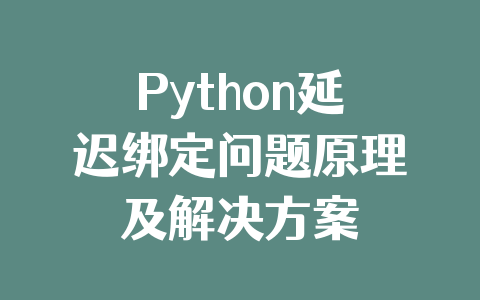python的数据类型有:数字(int)、浮点(float)、字符串(str),列表(list)、元组(tuple)、字典(dict)、集合(set)
一般通过以下方法进行判断:
1、isinstance(参数1,参数2)
描述:该函数用来判断一个变量(参数1)是否是已知的变量类型(参数2) 类似于type()
参数1:变量
参数2:可以是直接或间接类名、基本类型或者由它们组成的元组。
返回值: 如果对象的类型与参数二的类型(classinfo)相同则返回 True,否则返回 False
例子:
#判断变量类型的函数 def typeof(variate): type=None if isinstance(variate,int): type = \"int\" elif isinstance(variate,str): type = \"str\" elif isinstance(variate,float): type = \"float\" elif isinstance(variate,list): type = \"list\" elif isinstance(variate,tuple): type = \"tuple\" elif isinstance(variate,dict): type = \"dict\" elif isinstance(variate,set): type = \"set\" return type # 返回变量类型 def getType(variate): arr = {\"int\":\"整数\",\"float\":\"浮点\",\"str\":\"字符串\",\"list\":\"列表\",\"tuple\":\"元组\",\"dict\":\"字典\",\"set\":\"集合\"} vartype = typeof(variate) if not (vartype in arr): return \"未知类型\" return arr[vartype] #判断变量是否为整数 money=120 print(\"{0}是{1}\".format(money,getType(money))) #判断变量是否为字符串 money=\"120\" print(\"{0}是{1}\".format(money,getType(money))) money=12.3 print(\"{0}是{1}\".format(money,getType(money))) #判断变量是否为列表 students=[\'studentA\'] print(\"{0}是{1}\".format(students,getType(students))) #判断变量是否为元组 students=(\'studentA\',\'studentB\') print(\"{0}是{1}\".format(students,getType(students))) #判断变量是否为字典 dictory={\"key1\":\"value1\",\"key2\":\"value2\"} print(\"{0}是{1}\".format(dictory,getType(dictory))) #判断变量是否为集合 apple={\"apple1\",\"apple2\"}46 print(\"{0}是{1}\".format(apple,getType(apple)))
返回:

2、通过与已知类型的常量进行比较
例子:
#判断变量类型的函数
def typeof(variate):
type1 = \"\"
if type(variate) == type(1):
type1 = \"int\"
elif type(variate) == type(\"str\"):
type1 = \"str\"
elif type(variate) == type(12.3):
type1 = \"float\"
elif type(variate) == type([1]):
type1 = \"list\"
elif type(variate) == type(()):
type1 = \"tuple\"
elif type(variate) == type({\"key1\":\"123\"}):
type1 = \"dict\"
elif type(variate) == type({\"key1\"}):
type1 = \"set\"
return type1
# 返回变量类型
def getType(variate):
arr = {\"int\":\"整数\",\"float\":\"浮点\",\"str\":\"字符串\",\"list\":\"列表\",\"tuple\":\"元组\",\"dict\":\"字典\",\"set\":\"集合\"}
vartype = typeof(variate)
if not (vartype in arr):
return \"未知类型\"
return arr[vartype]
#判断变量是否为整数
money=120
print(\"{0}是{1}\".format(money,getType(money)))
#判断变量是否为字符串
money=\"120\"
print(\"{0}是{1}\".format(money,getType(money)))
money=12.3
print(\"{0}是{1}\".format(money,getType(money)))
#判断变量是否为列表
students=[\'studentA\']
print(\"{0}是{1}\".format(students,getType(students)))
#判断变量是否为元组
students=(\'studentA\',\'studentB\')
print(\"{0}是{1}\".format(students,getType(students)))
#判断变量是否为字典
dictory={\"key1\":\"value1\",\"key2\":\"value2\"}
print(\"{0}是{1}\".format(dictory,getType(dictory)))
#判断变量是否为集合
apple={\"apple1\",\"apple2\"}
print(\"{0}是{1}\".format(apple,getType(apple)))
返回:

补充:
isinstance() 与 type() 区别:
- type() 不会认为子类是一种父类类型,不考虑继承关系。
- isinstance() 会认为子类是一种父类类型,考虑继承关系。
如果要判断两个类型是否相同推荐使用 isinstance()。
以上就是如何在python中判断变量的类型的详细内容,更多关于Python判断变量类型的资料请关注自学编程网其它相关文章!













